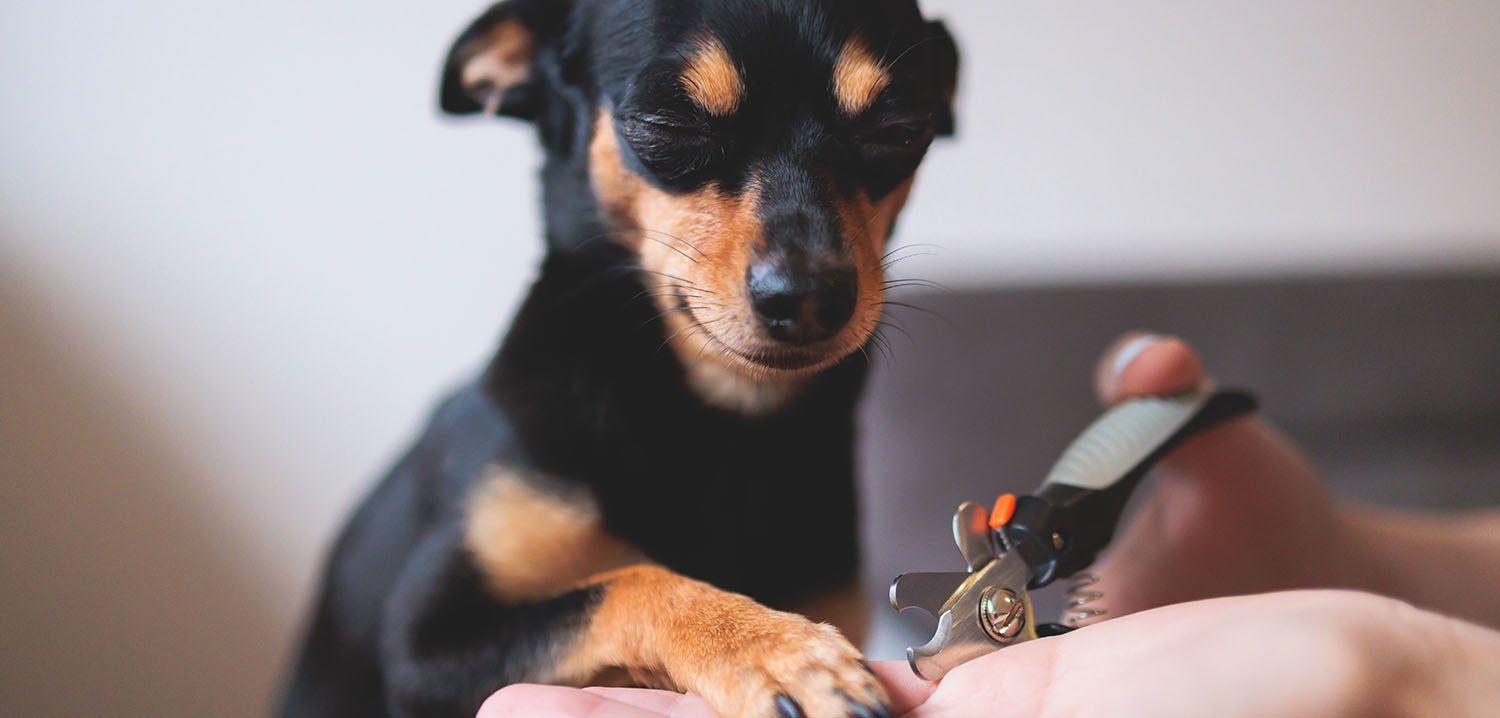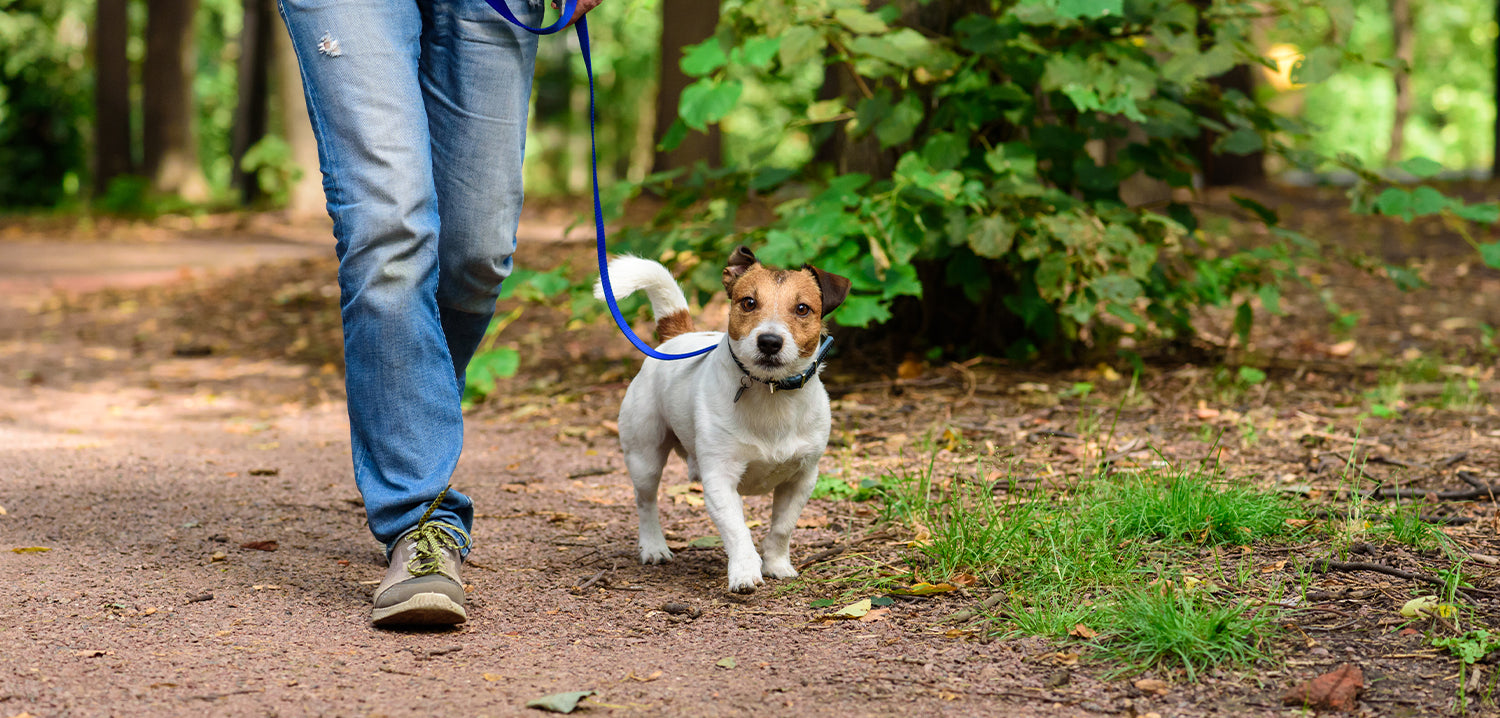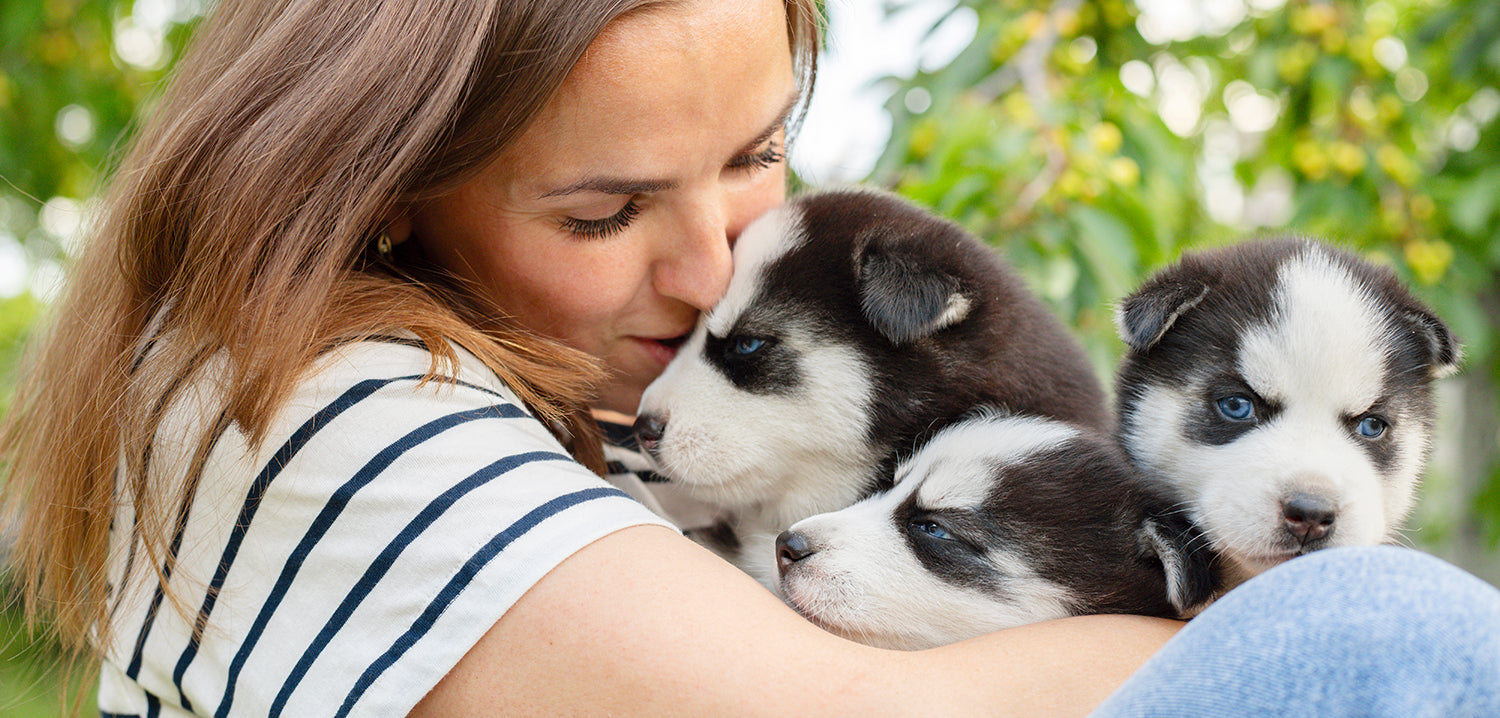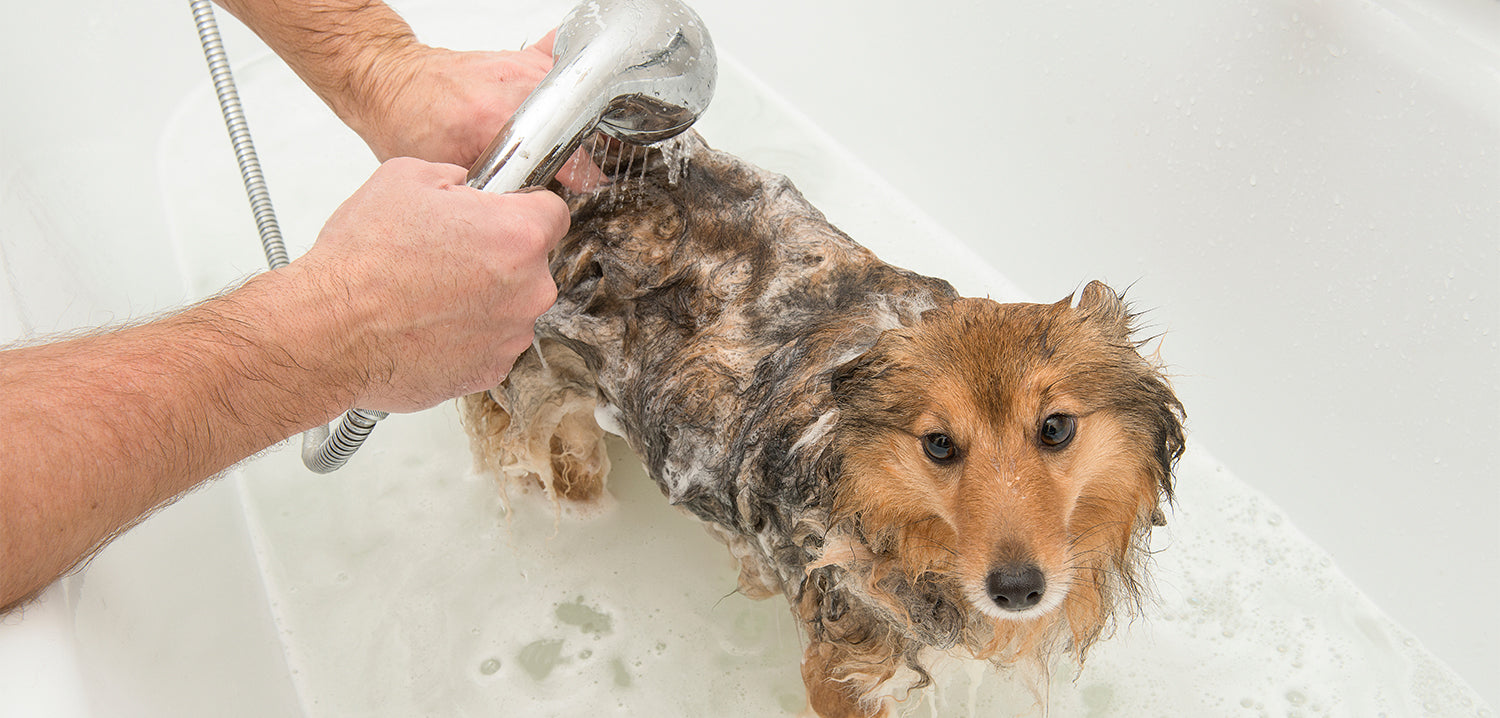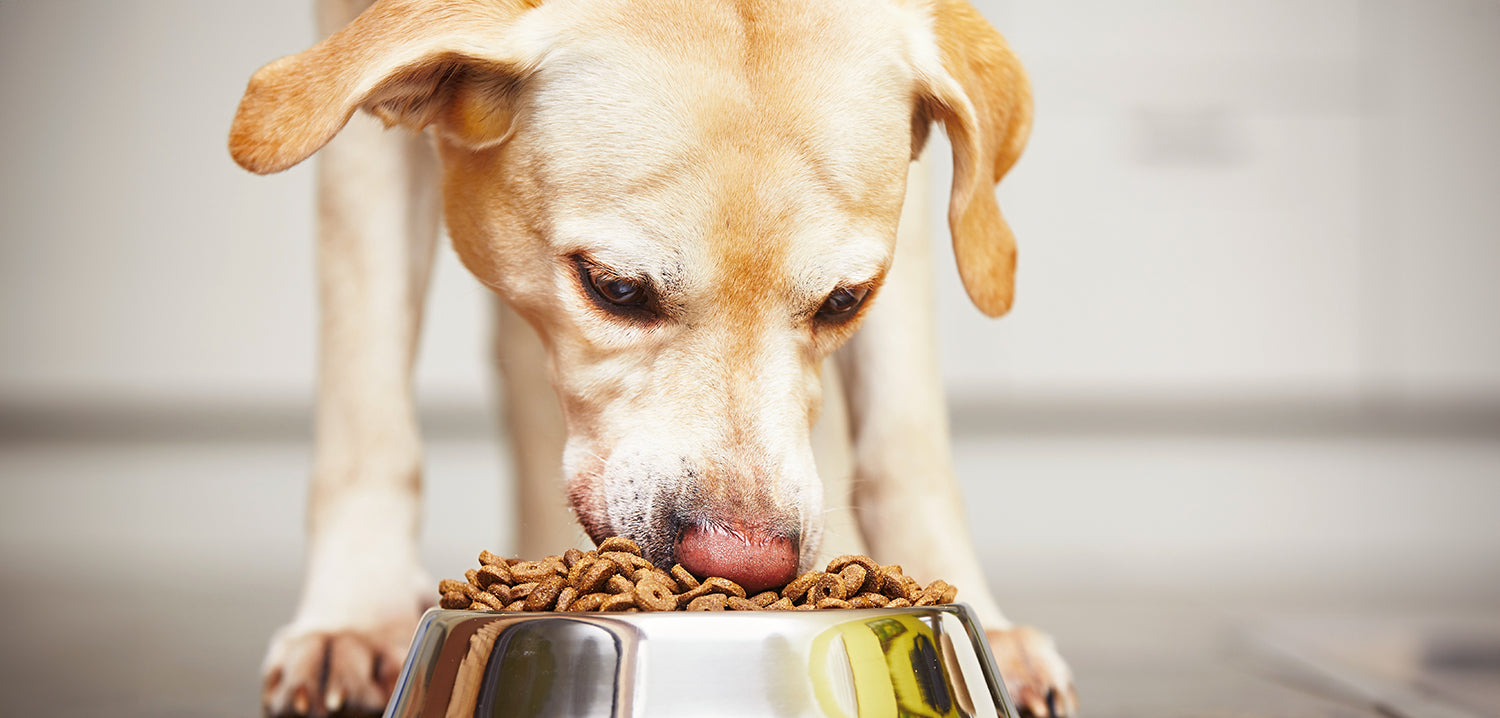Finding black spots on your dog’s skin can worry dog parents, however it’s actually a common phenomenon that occurs in dogs of different ages and breeds - although it is particularly apparent in senior dogs and dogs with light-coloured coats. Usually you’ll find these spots on your dog’s stomach or near their genitals, but it can occur in different areas too. Essentially, these black spots are caused by hyperpigmentation, which means your dog is producing more melanin than usual, darkening certain areas of skin and resulting in black spots on your dog’s skin. However, hyperpigmentation is a secondary condition and there is usually something else that has triggered it - particularly if your dog is itching and scratching .
While black spots can be harmless if caused naturally by ageing, genetics or sun exposure, other times it can indicate an underlying medical condition. Potential causes can range in severity from allergies and skin infections to endocrine disorders and cancerous tumours, which is why it’s essential for dog parents to understand their dog’s black spots on their skin. In this article, we look at what the black spots are, why they develop on your dog’s skin and when it may be harmless or harmful. We also advise on how to look after your dog’s overall well-being to support good skin health and prevent black spots from occurring. By knowing what’s normal and abnormal with your dog’s skin and seeking veterinary help when necessary, you can be rest assured that your dog is well looked after.
To get straight to it, we look at 5 potential causes of your dog’s black spots on their skin.
Skin infection
Bacterial, fungal and yeast skin infections can cause black spots to develop on dog skin as a result of inflammation and changes in skin pigmentation. Secondary skin infections can also be caused by parasitic infestations if your dog has damaged their skin by scratching excessively, making their wounds susceptible to microorganisms. It’s important that dog parents consult a veterinarian at first sight of a skin infection, as this can make it easier to manage initially with appropriate treatments and can prevent black spots on their dog’s skin, as well as other diseases.
Allergies
Like humans, dogs can also have food and environmental allergies and may experience symptoms such as itchy skin. As your dog tries to soothe their discomfort by excessively scratching, licking or chewing their skin, this can cause skin damage and lead to hyperpigmentation as the skin attempts to repair itself. You can look out for other symptoms of allergies, such as your dog’s skin becoming red or inflamed, as well as any other changes in behaviour. By knowing and managing your dog’s allergies, you can help relieve their discomfort and prevent dog black spots on their skin from developing.
Trauma or injury
While your dog scratching themselves due to an infection or allergy can lead to hyperpigmentation, black spots on your dog’s skin can also be caused by other forms of skin trauma, such as an injury. If your dog’s skin is bruised, it may initially appear as red or purple, but then turn black as the bruises heal. Black spots on dog skin could also be due to increased production of melanin as their skin cells repair themselves and/or form scar tissue.
Age
As your dog ages, natural hyperpigmentation is to be expected. Dogs experience changes in their skin and coat as they grow older, which could be due to an increased production of melanin. It may also be that your dog already has areas of more pigmentation which have become more prominent with age. Also, your senior dog has likely had plenty of sun exposure in their life, which may have caused freckles and could be why black spots appear on your dog’s skin.
Underlying medical condition
While the majority of the above factors causing hyperpigmentation are harmless, sometimes black spots on dog skin can be a serious cause for concern. If there are hormonal imbalances in your dog, such as hypothyroidism or Cushing’s disease, as well as endocrine disorders, this can influence skin pigmentation. Also, although this is less common, malignant tumours such as melanoma can affect pigmentation in skin cells, and in this case, dog parents should closely observe their dog’s black skin spots for any changes and seek veterinary advice.
Are black spots on dog skin always harmful?
Black spots on a dog’s skin are not always harmful, however, dog parents should closely observe the black spots on dog skin to see if they change rapidly in size, shape or texture, if there’s any hair loss in the area, or if your dog seems to be in discomfort or pain due to itchiness or inflammation. In any of these cases, you should consult a veterinary expert .
It’s particularly important that you take care of older dogs who will need more support with their health as they get older. By serving James Wellbeloved™ Senior Dog Food, which has been specially formulated for older dogs, you can ensure your senior dog is receiving essential nutrition for their well-being.
How can black spots on a dog's skin be prevented?
There are measures that dog parents can take to look after their dog’s skin and minimise the occurrence of black spots, and we’ve listed 5 tips below:
-
Proper grooming routine.
By regularly grooming your dog , you can remove any loose hair and debris in order to keep their skin and coat healthy. This can also help you look out for any signs of infection, trauma and black spots on your dog’s skin.
-
Ensuring good hygiene.
Bathing your dog after messy play or muddy walks also promotes good skin and coat health. Whilst giving a bath, if you notice black specks on your dog’s skin and it’s not fleas or flea dirt, consult with a veterinarian.
-
Maintaining a healthy diet.
Serving your dog high-quality dog food that is appropriate for their age, size and health will ensure they’re receiving a complete and balanced diet. Your dog will get the essential nutrients they need for their skin health.
-
Protection from the sun.
While you may enjoy walking your dog in the sun, it’s important to know how to care for your dog in hot weather to prevent excessive sun exposure. You should always use dog-safe sunscreen on exposed parts of their skin, and avoid walking in the strong sun.
-
Managing allergies.
If you know your dog is allergic to certain foods or environmental factors, try to avoid exposure to these allergens. This can help prevent skin reactions to allergies and reduce the likelihood of black spots.
-
Regular veterinary check-ups
In any case, it’s essential to regularly take your dog to the veterinarian for check-ups, as well as to detect any health problems early. You should also administer flea and tick preventative treatments regularly to reduce skin problems.
When should I consult a veterinarian about black spots on my dog's skin?
Dog parents should consult a veterinarian if they notice any changes in their dog’s skin, including the appearance of black spots. It’s important to detect any underlying medical issues early, or rule them out if the black spots are benign. If the black spots on your dog’s skin have developed suddenly, or the existing spots have changed quickly in size, shape, colour, or texture, it’s essential to consult a veterinarian.
You should also look out for any other symptoms alongside the black spots on dog skin. This includes if your dog is excessively licking, scratching or chewing the areas, and if there’s any redness, swelling or hair loss. Also, look out for any open skin sores from your dog’s itching, as this may be susceptible to secondary skin infections and make matters worse if left untreated.
It’s expected that over the course of a dog’s life, they will experience various skin problems - including dog black spots on skin. Dog parents can reduce the likelihood of skin-related issues by looking after their dog’s overall health, including a healthy diet, good hygiene and regular check-ups with a veterinarian. Another common occurrence is skin tags on dogs , and dog parents should also familiarise themselves with this, amongst other health issues, so they stay aware of what’s normal and abnormal in their dogs and seek expert help if need be.


